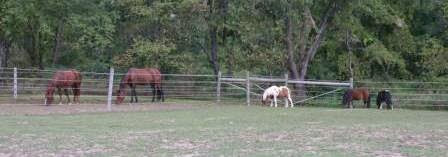· 35% (an estimated 53.5 million Americans) of the U.S. workforce report being bullied at work
· 72% of workplace bullying is done by people in positions of authority
· 43% of bullies have an “executive sponsor” who protects him/her from being disciplined for the behavior
So what is the definition of workplace bullying? According to the Workplace Bullying Institute, it’s defined as “repeated, health-harming mistreatment, verbal abuse, or conduct which is threatening, humiliating, intimidating, or sabotage that interferes with work or some combination of the three.” Some people may dismiss these behaviors saying “Oh, that’s just how he is – he doesn’t mean anything by it.” Or “She’s just having an off day.” The truth is, people who use predatory leadership behaviors such as bullying to influence others are doing it with the intention of creating submission through fear. Most likely they know exactly what they are doing and why they are doing it.
Employees on
the receiving end of bullying are often made to feel that they are “troublemakers”
and may end up being re-victimized by managers and human resource staff who
don't understand the nature of the problem or don’t enforce policies that are
in place. Not addressing an employee’s
concerns about a co-worker or boss who is exhibiting bullying behaviors can be
costly on several levels. Employees who are being bullied are likely to
be less productive, take more sick days and experience much higher levels of
stress, which can lead to a multitude of health issues.
In addition
to the above mentioned effects, employers who do not address bullying may be
setting themselves up for legal issues. If
an employee reports bullying to the human resource department and nothing is
done to address the employee who is doing the bullying, the employee who is
being victimized may sue the entire organization for the damages caused by the
bully (physical and emotional health issues, economic effects). That seems like a large liability for an
organization. Yet, as mentioned earlier,
“43% of bullies have an executive sponsor who protects him/her from being
disciplined.” All of this leads to the question we need to be asking “Why does this behavior happen in the first place?” Bullying is often tied to a perception that power is obtained through fear and intimidation. People have subscribed to this theory of predatory leadership for thousands of years. We perceive that the individual that acts aggressively toward others is the “leader” and the rest of the group follows out of “respect” so this has been the leadership style most widely practiced. The reality however is that in most groups, the leader is actually the member who is calm, assertive and confident in managing the social structure of the group. Horses are an excellent example of this kind of non-predatory leadership. The “dominant” horse – the one seen biting, striking or chasing the other horses in order to secure resources -- is thought to be the herd leader. This is completely the opposite of what is actually true. The herd leader is the individual who acts in a calm assertive manner while accessing resources as well as in reacting to potential threats. The leader is able to assess how much influence needs to be exerted to let others know what he/she expects of them. The communication may be as subtle as the movement of an ear or as blatant as a bigger body movement. This is non-predatory leadership at its best and creates a much healthier environment for all because the intention is not to influence through fear but through trust.
Non-predatory
leadership is not about being passive.
It is about using social and emotional intelligence to show respect, create boundaries, set an example of healthy
relationships and understand that everyone has an important role in the
group. Bullying has no place in the
practice of non-predatory leadership and organizations that have issues with
bullying should re-evaluate whether they are providing the right training
opportunities for their managers and employees to prevent a culture that allows
and possibly even encourages predatory leadership as the way to manage
employees.
I’ll write
more about the concepts of non-predatory leadership in future blogs. To find out how you can gain the skills to
lead with social and emotional intelligence, check out our website at www.wagersway.com.





.jpg)